
Au gratin cooking tips and recipes
Au gratin is a potato-rich dish defined by thin layers and made with a velvety cream sauce and a crisp, golden topping. Use this guide to explore au gratin’s essential elements, creative variations, step-by-step methods, baking tips and more.
What is au gratin?
Au gratin, often known as potatoes au gratin, is a cozy French-inspired side dish built on thin layers of potatoes baked in a creamy sauce. It’s topped with cheese—and sometimes breadcrumbs—then finished in the oven until the top is golden, crisp and indulgent.
Key characteristics of au gratin cooking
Au gratin refers to a culinary technique where ingredients are topped with grated cheese (and sometimes breadcrumbs), then baked or broiled to create a golden crust. While potatoes are classic, gratins can also feature vegetables, seafood or other bases.
The key elements of a traditional au gratin recipe include thinly sliced potatoes, a smooth cream sauce and a baked topping that adds texture and flavor, all typically baked in a shallow casserole dish.
Au gratin recipes
You don’t have to confine your au gratin bake to traditional standards. The creamy, cheesy layers of a gratin dish can showcase everything from root vegetables to seafood or even cauliflower. Read through the recipe roundup below to discover variations of the classic recipe and find inspiration.
Potatoes au gratin: The classic version, this dish uses thin slices of potatoes layered with a simple cream sauce of butter, flour and milk. Then it’s seasoned, topped with cheese and baked until bubbly with a crisp finish.
Root vegetable gratin: This is a heartier take that brings in vegetables like beets, parsnips or fennel alongside potatoes. Each layer is coated with cream and cheese before baking into a slightly earthy, colorful spin on the traditional dish.
Seafood gratin: Seafood takes the spotlight in this variation, where scallops, haddock or cod are baked in a creamy sauce, topped with cheese and often paired with extras like mushrooms.
- Cauliflower gratin: For something lighter, cauliflower replaces potatoes as the base. Florets are tossed in a cream sauce, seasoned with herbs, sprinkled with breadcrumbs and cheese, and baked until tender and golden.

KitchenAid® ranges
A range for every kitchen
Explore slide-in and freestanding ranges crafted for performance and style to help you create your favorite recipes
How to make an au gratin dish at home
Mastering a classic au gratin requires layering simple flavors and textures, from preparing your dish and slicing potatoes to crafting a creamy sauce and finishing with a crunchy, cheesy crust. Follow these simple steps below, as well as your favorite recipe, to help create your own golden, home-baked au gratin.
Step 1: Preheat and prepare dish
Heat your oven as directed in your recipe and butter or oil your baking dish so the finished gratin slides out easily.
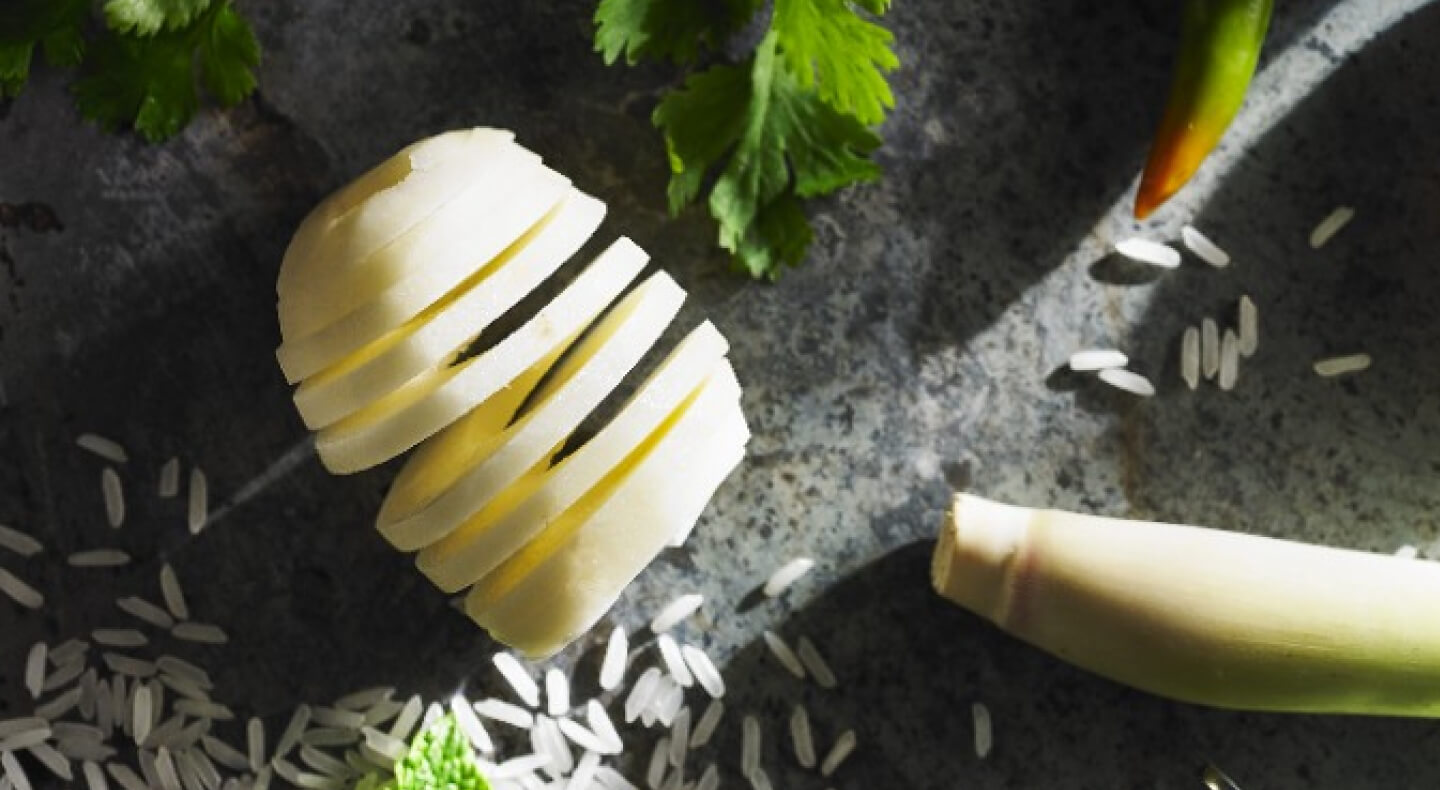
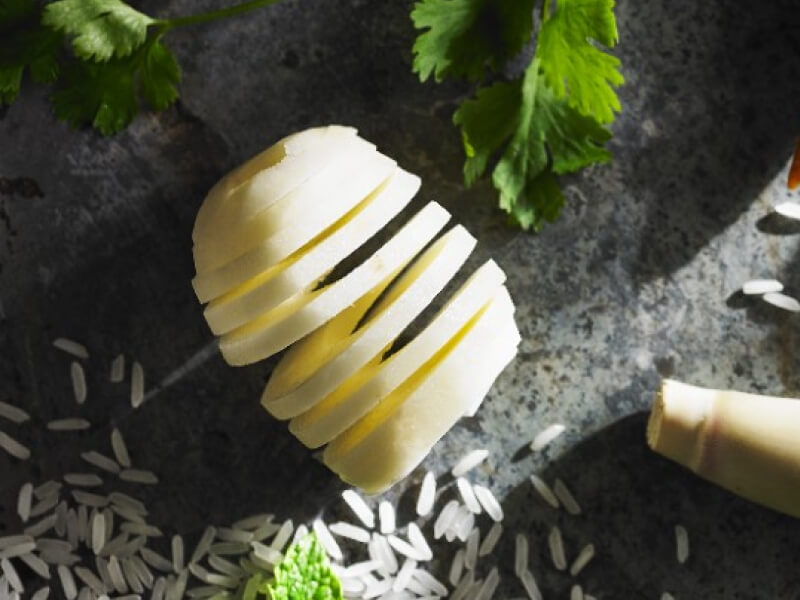
Step 2: Slice potatoes
Thin slices are the key to a classic au gratin. Russet potatoes usually need peeling, while Yukon Golds and reds can be sliced with the skin on.
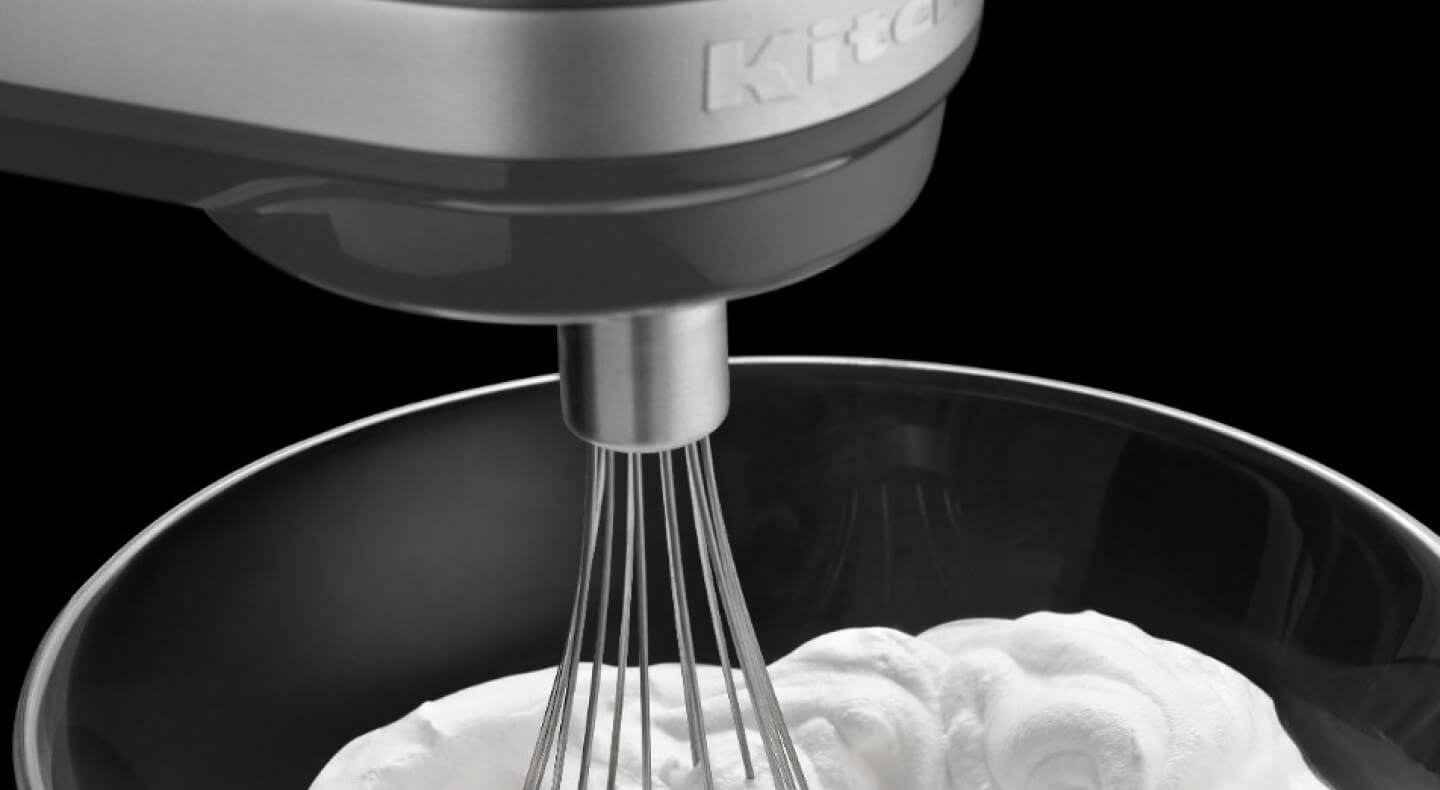
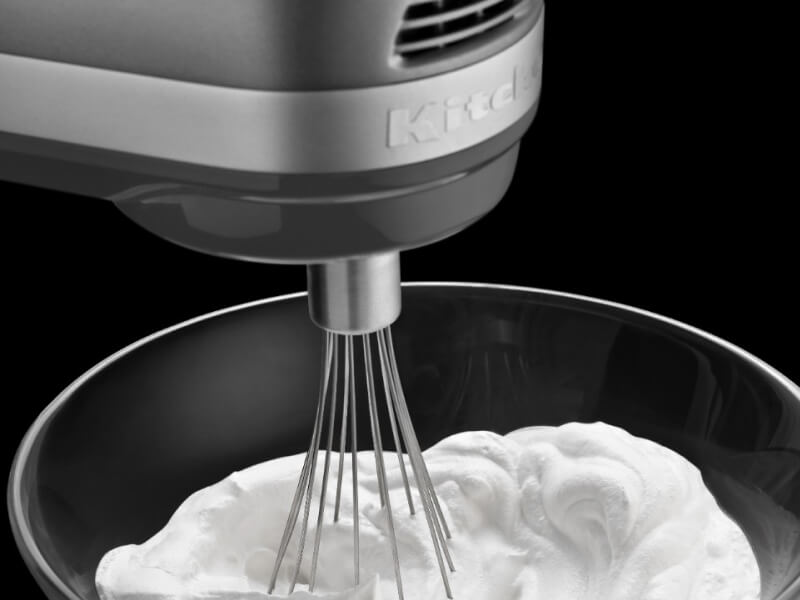
Step 3: Create cream base
Recipes can vary, but you’ll generally create the cream base by whisking together flour, butter and milk (or cream) to create a smooth sauce. Season simply with salt and pepper, or get creative with seasonings like thyme or cayenne to add a depth of flavor.
Step 4: Combine ingredients
You can either stir the potatoes into the sauce before baking or layer them neatly in the dish, then pour the sauce over top, depending on your recipe. Both approaches can create an indulgent dish, but layering can give your finished dish a more polished look.
Step 5: Cover and bake
Cover your dish with foil, then let the dish get half to two-thirds of the way through the bake time (as specified in your recipe) before removing the foil to help promote browning.
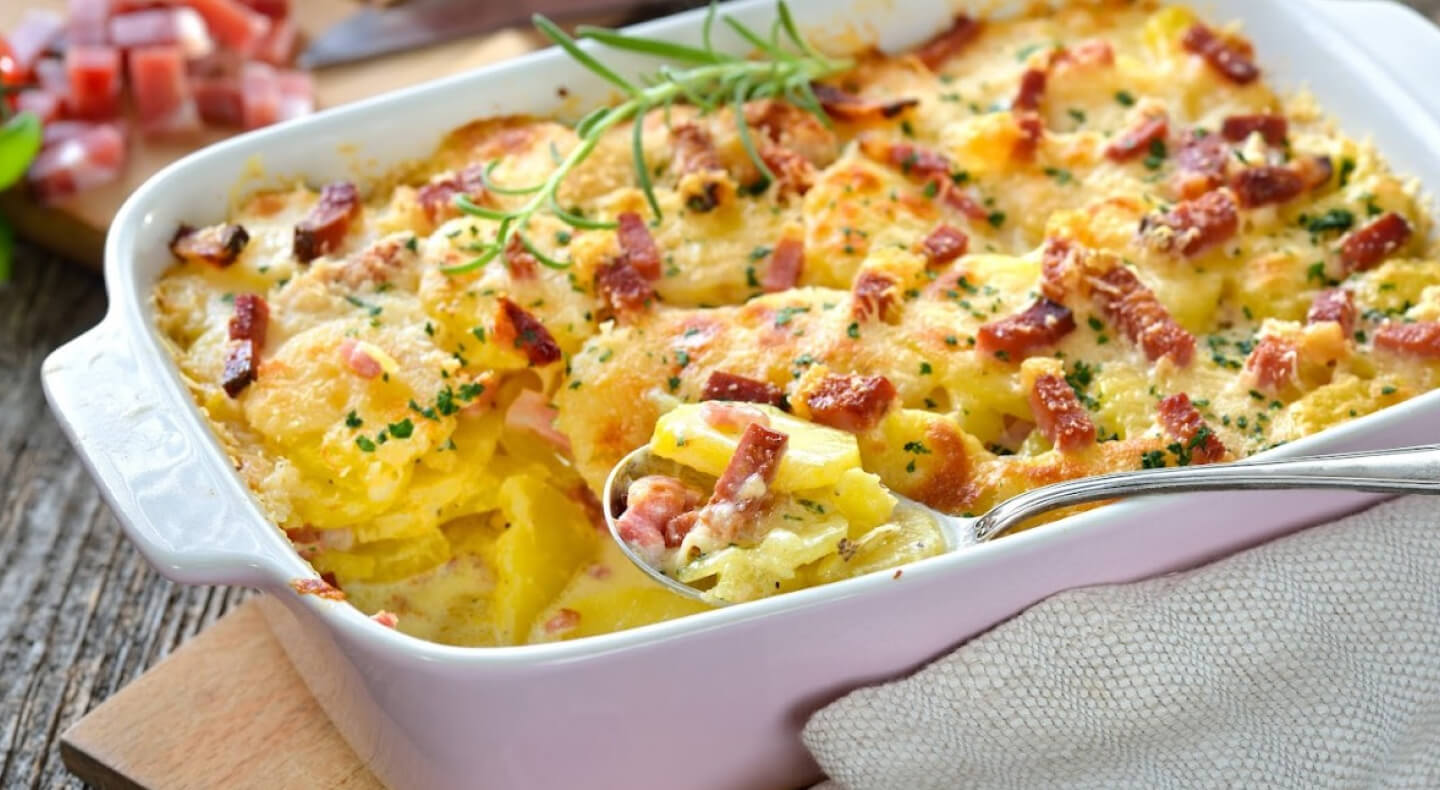
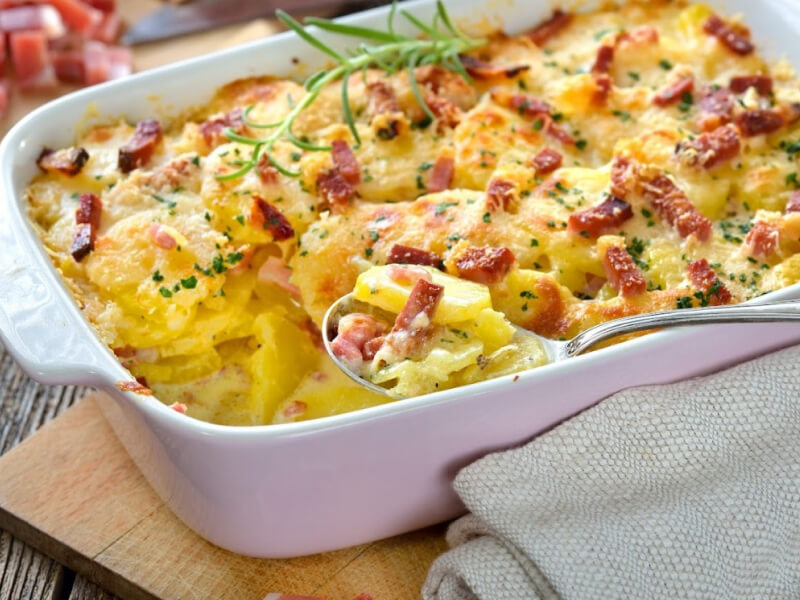
Step 6: Add toppings and finish bake
The signature crust on the top of au gratin is often made up of grated cheese—and sometimes additions like breadcrumbs or fresh herbs—added in the final moments of baking. Remove the dish from the oven with about three to five minutes of bake time left, sprinkle on grated cheese, herbs, breadcrumbs or other toppings of your choice, then return it to the oven to help create a bubbly, brown crust.
Shop KitchenAid® ranges with air-powered cooking
Make more of what you love with KitchenAid® electric and gas ranges. Select KitchenAid® ranges feature Air Baking to help you craft delicious cakes, muffins and last-minute bake sale treats; Air Roast to seal in the flavors and juices of meat and poultry; and Air Broil to melt, char and sear quickly. You’ll also find KitchenAid® models like this one that are designed to be personalized with a curated palette of exterior finishes and mixed metal hardware. Personalize your hardware with optional handle and knob accessory kits in Brass, Bronze, Black Ore and Stainless Steel.
What's the difference between au gratin and scalloped potatoes?
Both au gratin and scalloped potatoes include sliced potatoes baked in a creamy sauce, but au gratin usually means thinner slices, a layer of cheese and often breadcrumbs on top. Scalloped potatoes tend to be sliced a bit thicker and often skip the cheese crumble, relying on cream and potatoes alone.
Tips for elevating your au gratin
The fun of cooking often comes from a little experimentation, like adjusting ingredients, trusting your instincts and adding a personal touch. Explore a few tips for making au gratin below and learn simple ways to adapt the recipe so it feels uniquely your own.
Choose your potatoes wisely: Yukon Gold or red potatoes often soak up flavor well and don’t require peeling before slicing.
Add fresh herbs: Thyme, rosemary or sage stirred into the sauce can bring freshness and depth to your recipe.
Use heavy cream for richness: Heavy cream creates a thicker, more luxurious sauce than milk. If the sauce thins out, potato flakes can also help thicken it up.
Experiment with cheese: Try Gruyère, fontina or sharp cheddar for different layers of flavor.
- Swap potato types: Sweet potatoes or mixed vegetables can create a refreshing twist on the classic recipe.


